100 Years of the RAF… Alan Deere’s Spitfire Mk I “Kiwi”, No. 54 Squadron Tamiya 1/48
This article is part of a series:
- 100 Years of the RAF, No. 19 Squadron circa August 1938, Duxford, UK 1/48 Airfix Spitfire Mk I “early”
- 100 Years of the RAF, 541 Squadron late 1944, Spitfire PR MK XIX, 1/48 Airfix
- 100 Years of the RAF, No. 601 Squadron, Egypt November 1942, 1/48 scale Tamiya 61035 Spitfire Mk Vb
- 100 Years of the RAF, No. 222 Squadron RAF Hornchurch, September 1940, Spitfire Mk Ia, “ZD-R” Tamiya 1/48
- Spitfire Mk Vb Tropical, EP-706 “T*L” No. 249 Squadron as flown by George Beurling at Malta
- 100 Years of the RAF… Alan Deere’s Spitfire Mk I “Kiwi”, No. 54 Squadron Tamiya 1/48
- 100 Years of the RAF, Spitfire Mk Vb, 81 Squadron RAF Hornchurch, June 1942 “FL*A” / BM-461 Tamiya 1/48
This is an article that I have been meaning to post for quite some time now... My apologies for being so late with getting it done.
I built this model as part of a series of numerous Spitfire models for the 100 Years of the RAF Group Build, that was moderated by Paul Barber. @yellow10
I received a lot of great tips from another fellow Imodeler, named Paul Nash, @white4freak
Paul Nash's tips helped to make this one look a little more accurate as far as the colors that were used during the construction and painting phases. Thanks again gentlemen... 🙂
This is the Tamiya offering that was built almost right from the box.
Now the question: Is this the old ancient Tamiya release from the 1990's that is claimed by many to be so horribly flawed ?
or is it the brand new Tamiya one ?
It might even be the newest Airfix offering... just look at the propeller... 🙂
I happen to have all of these kits and have built them all...
Still looks like a Spitfire to me... now which one is it ? Hmmmmmmmmmmmmm.
You will have to read to the end of the article to find out, if your not able to tell from just looking at the pictures...
I will say that this kit went together without any problems encountered at all. No filler was used throughout the construction. It was a dream to build.
Armed with a few photographs, and having found out there were actually Two different planes named "KIWI", I went to work.
and tried my best to replicate another KIWI in miniature.
Here's another photo showing the "KIWI" bird was present on both sides of the aircraft.
I wanted to depict the Spitfire in various the forms of camouflage that was used during this time frame. Most planes were covered in variations of different colors that were used on the undersides.
Some planes had "Sky", some had "Duck Egg Blue" that was sometimes called "Duck Egg Green" or even "Eau-de-Nile". Others had one side painted in "Night" which was a Black color, while the opposite side was painted in White.
This next picture will show what a typical Spitfire could have looked like during this time.
To make matters even more complicated, there was a "B" scheme and an "A" scheme. These were basically a mirror image of each other, as can be seen in this next photo.
Ironically before the War, there were a total of 4 different patterns used, from the "A" through the "D" scheme. This was another variation that involved swapping the colors around so that the "Earth Brown" would be painted where the "Dark Green" was, and just the opposite...
I also wanted to build up a plane that was flown by Alan Deere. This one fit the requirements I set forth rather nicely...
The Spitfire was going through some production line changes during this time as well. Some used the De Havilland propeller, while others used the Rotol unit. The differences can be seen in the picture I posted above.
Alan Deere's "KIWI" on the right has the Rotol propeller with a blunt more rounded spinner. It also has a wider blade profile.
The De Havilland unit is shown on the left, and is used on the 222 Squadron machine that is coded "ZD * R". Is this the new tool Airfix kit on the left ? I'm still not telling you just yet...
Also during this time there is a lot of conflicting information out there on just how the Spitfire was painted.
Some have said that without a doubt masks were not used... I beg to differ and have some written documents to show otherwise... and say that they were "Authorized for Use".
So why were they not used ? Or were they ?
I have not found photographic proof showing them in use on a Spitfire...yet.
There's a logical answer to this... Please follow along as I explain, using common sense and a little detective work.
This next picture shows the masks used on a Curtiss Built P-40 that was being painted to RAF specifications, as ordered in the contract. You will see the one piece wing is being painted, and how the masks are not tightly pressed against the skin of the wing in all areas.
This next document was found by the late Edgar Brooks... who probably forgot more about the Spitfire than I ever will know... RIP Edgar.
This document talks about how the use of spraying masks was authorized... confirming the existence of them... at least on paper.
I highlighted the sentence in yellow... and underlined the wording in the sentence about the masks...
The last bit of information found in this document talks about the reflectivity and "Gloss" shine on the surface. Spitfires were "wet" sanded using 400 grit paper. This created a uniform semi gloss finish and helped to reduce drag that was caused by a flat type sheen found on a typical camouflage paint.
I even found a few color pictures that were taken for the "LIFE" magazine during the War. If you look very close at the photos, you will see that the demarcation lines between the two different machines look to be almost identical. This increases the validity to the use of masks...and the use of wet sanding the finish.
Granted repainting was often done in the field. It had to be. Otherwise, it would have reduced the number of aircraft available for use at a time when they were needed the most. On planes that were repainted "In the Field", they would have had a different look where the colors joined, and overspray would have been more prevalent.
I have personally painted numerous automobiles, and can tell you all about a "tight" pattern and how it affects overspray. There is a difference between a factory paint job and a field repair.
Why have I not been able to find any photographs of these painting matts being used on a Spitfire ? To begin with, taking pictures in a wartime factory was illegal in Great Britain. One could find themselves in a bunch of trouble if they were caught doing so.
Pictures that were taken in factories were authorized by the officials, and were scrutinized before release. Plus you have to remember that a "War" was going on, and having spare time not dedicated to production efforts was considered a waste of time and essential materials.
These are the most likely reasons we are having such a hard time finding pictures of the mats. I personally believe they existed.
One might ask, "Why are there no matts left in museums or personal collections today as relics ?". This one has a surprisingly simple answer...
The rubber composition used by the British for various items simply deteriorated with time. These rubber items crumbled away with age. It has been almost 80 years since they were in existence. There is most likely nothing left of them, even if we were able to locate one. The German and American rubber companies used a different formula in their rubber products, so there are examples of these items still left with us today. My understanding is that horse hair was also incorporated into the rubber formula.
How about these landing gear legs ? Can you tell yet which company produced this model Spitfire ? Is it raked forward to compensate for the larger Griffon engine like on the later Marks ? Remember the Spitfire Mark number was not in chronological order...
How about now ? Does this picture help ?
Still can't tell ? ... please keep reading. The main wheels were shifted forward a whole whopping Two Inches with the Griffon. In 1/48 scale that measures out to be approximately .041 inches... almost 1/32nd of an inch and hardly noticeable.
That's 1.041 millimeters. I did the math...
Enough about the painting procedures...and the landing gear legs.
On to the man.
Alan Christopher Deere.
This information was copied directly from Wikipedia. I am not the author of this.
Deere was born in Auckland, the third son of Terrence (known as Joe) and Teresa (née Curtin) Deere, while his father was employed in the Post Office. The family returned soon after Alan's birth to the family's home town of Westport, where Joe took up a position with the New Zealand Railways.[1]
Deere attended St Canices School in Westport before the family moved to Wanganui where the family established a home at 43 Plymouth Street, which allowed Deere to grow up in a semi-rural environment while he attended Marist Brothers' School and Wanganui Technical College. At the age of eight he saw an aircraft fly overhead and sprinted to see it land on a nearby beach. The pilot allowed him to sit in the cockpit and Deere determined to become a pilot.
After a school career dominated by success in sports, representing his school in rugby, cricket and boxing, Deere spent two years as a law clerk. Encouraged by his family doctor to follow his chosen career, Deere persuaded his mother to sign the under 21 application for entry into the Royal Air Force. He passed selection under Wing Commander Ralph Cochrane in April 1937 and sailed for England on the Rangitane in September, but was admitted to hospital with high blood pressure.
Deere began flying training on 28 October 1937, at the De Havilland Flying School at White Waltham, the No. 13 Elementary and Reserve Flying Training School.
On 9 January 1938 he was granted a short service commission as an acting pilot officer on probation, and started initial officer training at RAF Uxbridge. He was confirmed in his appointment as a pilot officer on 28 October 1938. Deere was selected for the RAF boxing team to tour South Africa, but flight training took priority and he was posted to No. 6 Flight Training School on 22 January 1939. The aircraft he was to have travelled in crashed at Bulawayo with the loss of all on board.
Deere was temporarily posted to No. 74 Squadron on 20 August, before joining No. 54 Squadron in September where he was joined by Colin Gray, who was to become New Zealand's top scoring pilot of World War II. Both squadrons operated Gloster Gladiators, the RAF's last biplane fighter.
No. 54 Squadron remained in England until May 1940, tasked with home defense, having converted to Supermarine Spitfire Mk 1s at the beginning of the year. Deere was enraptured with the Spitfire, describing it as "the most beautiful and easy aircraft to fly." He was later given a chance to fly a captured Messerschmitt Bf 109 (called a Me 109 by Allied pilots) and found the Spitfire superior:
In my written report on the combat I stated that in my opinion the Spitfire was superior overall to the Me 109, except in the initial climb and dive; however this was an opinion contrary to the belief of the so-called experts. Their judgment was of course based on intelligence assessments and the performance of the 109 in combat with the Hurricane in France. In fact, the Hurricane, though vastly more maneuverable than either the Spitfire or the Me 109, was so sadly lacking in speed and rate of climb, that its too-short combat experience against the 109 was not a valid yardstick for comparison. The Spitfire, however, possessed these two attributes to such a degree that, coupled with a better rate of turn than the Me 109, it had the edge overall in combat. There may have been skepticism by some about my claim for the Spitfire, but I had no doubts on the score; nor did my fellow pilots in 54 Squadron
On 23 May 1940, during the closing phases of the Battle of France, Deere and Pilot Officer J. Allen flew Spitfires escorting Flight Lieutenant James Leathart across the channel in a Miles Magister to rescue No. 74 Squadron's commanding officer, who had made a forced landing. In sight of Leathart and White, Deere claimed his first combat victories, shooting down two Bf 109s. Later the same day he shot down a third Bf 109. On 24 May he added a Bf 110 over Dunkirk and on the 26th claimed two more in the same area.
On 28 May, Deere was shot down by a Dornier Do 17 he was attacking near Dunkirk. He was knocked unconscious when making a forced landing on a Belgian beach. Rescued by a soldier, Deere made his way on foot to Oost-Dunkerke where his head injuries were dressed. He hitched a ride on a British Army lorry to Dunkirk, and (after receiving some criticism from soldiers about the effectiveness of the RAF's fighter cover), boarded a boat to Dover from where he took a train back to London, 19 hours after taking off from RAF Hornchurch with his squadron.
No. 54 Squadron took part in the defence of channel shipping against Luftwaffe attacks designed to draw out and destroy RAF Fighter Command. On 9 July Deere shot down a Bf 109 over the channel, but then collided head on with a Bf 109 of 4 Staffel, Jagdgeschwader 51, flown by Oberfeldwebel Johann Illner. The propeller blades of Deere's spitfire "Kiwi" were bent backwards, the engine disabled, and much of the fin and rudder lost. Nevertheless, he managed to glide back to the coast near Manston where his forced landing in a paddock ended against a stone wall.
The colour scheme of this aircraft (P9398, KL-B, named, like two other Deere Spitfires, "Kiwi"), was accurately recorded and in consequence it has been a favourite with modellers and manufacturers. The remains of this aircraft have recently been excavated and are to be rebuilt.
On 28 July Deere was promoted to the rank of flying officer. After Adlertag (Eagle Day) on 11 August he shot down a Bf 109, two more plus a Bf 110 the next day, and on the 15th added another Bf 109 over the Channel. However he was then trapped in an unequal dogfight with Bf 109s which attempted to block his return to England. Deere made the coast but was forced to bail out at low altitude, and was admitted to Victoria Hospital with minor injuries. He discharged himself the following day. Deere was shot down again on 28 August - this time by a Spitfire - but parachuted to safety. A frustrating combat on the 30th saw him claim a probable Do 17.
The following day the Luftwaffe raided Hornchurch. Deere led a section of three Spitfires which attempted to take off during the raid. A bomb destroyed all three aircraft. Deere's Spitfire was blown on its back, trapping him. Pilot Officer Eric Edsall, though badly injured when his own Spitfire had been destroyed, crawled to Deere's aircraft and freed him. Seeing Edsall's injuries, Deere then carried his rescuer to the sick bay.
Such was the toll on men of No. 54 Squadron that on 3 September, before the peak of the battle, the squadron was withdrawn from No. 11 Group and moved to the northern airfield at RAF Catterick to rest and recover
While training new replacement pilots in January 1941, Deere collided with one of them, losing most of his tail to the Sergeant Pilot's propellor. When bailing out, Deere was trapped against part of his aircraft, and his damaged parachute failed to fully open. Deere landed in an area of open sewerage which broke much of his fall. As a result of this incident he was rested from active flying, but granted the acting rank of squadron leader and tasked as Operations Room Controller at Catterick. An unusual honour was having his portrait painted by official war artist Cuthbert Orde that February.
On 7 May 1941 he was posted to RAF Ayr as a flight commander in No. 602 Squadron. On 5 June he suffered engine failure over the North Sea and glided back to another forced landing on the coast, crawling out the small side door after the Spitfire flipped on to its back, destroying the canopy and temporarily trapping him. At the end of July he took over as Officer Commanding No. 602 Squadron, and on 1 August it moved back to RAF Kenley. On the same day he shot down another Bf 109.
He was promoted to the war substantive rank of flight lieutenant on 28 July 1941, and to the permanent rank on 28 October 1941.
In January 1942 he was sent on a lecturing and public relations trip to America teaching American pilots fighter tactics learnt in the Battle of Britain
Deere returned to action on 1 May, taking command of a Royal Canadian Air Force squadron, No. 403 Squadron, at RAF North Weald. In August he went on a course at RAF Staff College and was subsequently posted to Headquarters No. 13 Group on staff duties.
He engineered a return to operations, somewhat unofficially, as a supernumerary with No. 611 Squadron at RAF Biggin Hill. He shot down an Fw 190 soon after, but wrote of his great respect for the type and its pilots.
He was given command of the Kenley fighter wing, but this was changed at the last minute to keep him as wing leader at Biggin Hill. While there, Deere was awarded the Distinguished Service Order, the citation reading:
This officer has displayed exceptional qualities of skill which have played a large part in the successes of formations he has led. His fearlessness, tenacity and unswerving devotion to duty have inspired all with whom he has flown. Wing Commander Deere has destroyed 18 enemy aircraft.
Deere led 121 sorties during his six months as wing leader, and added another four claims to his total. He was granted the war substantive rank of temporary squadron leader on 14 June 1943
On 15 September 1943 he went to RAF Sutton Bridge to command the Fighter Wing of the Central Gunnery School. On 14 January 1944 he was awarded the Distinguished Flying Cross by the United States. He received a staff job in March 1944 at No. 11 Group but at the request of General Valin, abandoned this to take command of the Free French fighter wing, leading it over the beaches on D-Day, and subsequently in its pilots' return to France. When the fighter wing moved further into Europe, he was posted to HQ 84 Group Control Centre as Wing Commander Plans until July 1945 when he became Station Commander at Biggin Hill. He was awarded the Order of the British Empire on 1 June 1945.
At the end of the war Deere was given command of the Polish P-51 Mustang Wing at RAF Andrews Field, Essex, presiding over its disbandment in October, before becoming Commanding Officer at RAF Duxford. Deere received a permanent commission as a squadron leader on 1 September 1945. In 1947 he was on the staff of AHQ Malta, subsequently joining the headquarters of No. 61 Group before becoming Operations Officer, North-Eastern Sector, RAF Linton-on-Ouse.
Deere was promoted to wing commander on 1 July 1951, and became Commanding Officer of RAF North Weald the following year. In 1955 he was on the directing staff of the RAF Staff College. He was promoted to group captain on 1 January 1958.
He served as Aide-de-camp to the Queen from 22 March 1961, to 30 June 1964, and was appointed Assistant Commandant of the RAF College, Cranwell, on 3 February 1963. Deere took command of 12 (East Anglian) Sector of Fighter Command on 25 March 1964, and was promoted to air commodore on 1 July.
On 30 January 1965 he was given the honour of leading fellow Battle of Britain fighter pilots in the main funeral cortège for Winston Churchill. In 1966 he commanded No. 1 School of Technical Training at RAF Halton. He was consulted for the 1969 film Battle of Britain.
Deere retired from the Royal Air Force on 12 December 1967. He then took up the civilian position of Director of RAF Rugby, which subsequently was expanded to Director RAF Sport. During this period he was Chairman of the RAF Rugby Board and a member of the Combined Services Rugby Team selection panel. A team selected while he was on the panel played the New Zealand All Blacks at Twickenham. He eventually retired to the village of Wendover, near Halton.
Deere published his autobiography Nine Lives in 1959.
He died on 21 September 1995 in his 78 year from the effects of cancer, a disease which also killed his grandfather and four of his brothers. His body was subsequently cremated, and his ashes were scattered over the River Thames from a Spitfire.
I have experienced my share of close calls in life...I'm probably on my 2nd or 3rd cat by now if they all have "9 Lives"... and now I am dealing with the effects of cancer since my wife was recently diagnosed with cancer, has had two surgeries and is undergoing treatments.
I think this is why building this particular Spitfire has such a personal meaning for me.
Thank you very much Paul Nash and Paul Barber for helping to make this particular Spitfire as accurate as I could.
Now to answer the question that many of you may be asking...
This is the older Tamiya kit, number 61032. Both of the Spitfires shown here are, I used the extra propeller assemblies from the excellent Airfix new tool model and it fit like a charm on these two older Tamiya cousins.
I currently have the new tool Tamiya Spitfire in hand and you can follow along with the building process on all of these various Spitfire kits by following this link.
I have not started building the brand new Tamiya Spitfire yet, but you just never know when the whim to do so will strike me...
My apologies for telling a little "White" lie about building it up. So far I have not, but I feel better having come clean with the revelation that it's still sitting in the box...for now at least.
I hope you enjoyed reading this as much as I have enjoyed the building.
Martin and staff, I used the new photo editing feature on several of the pictures I presented with this article. I like this feature, and it's like having icing on your cake... Well done Sirs !
This is the best web site ever... 🙂
As always,
Comments are encouraged.
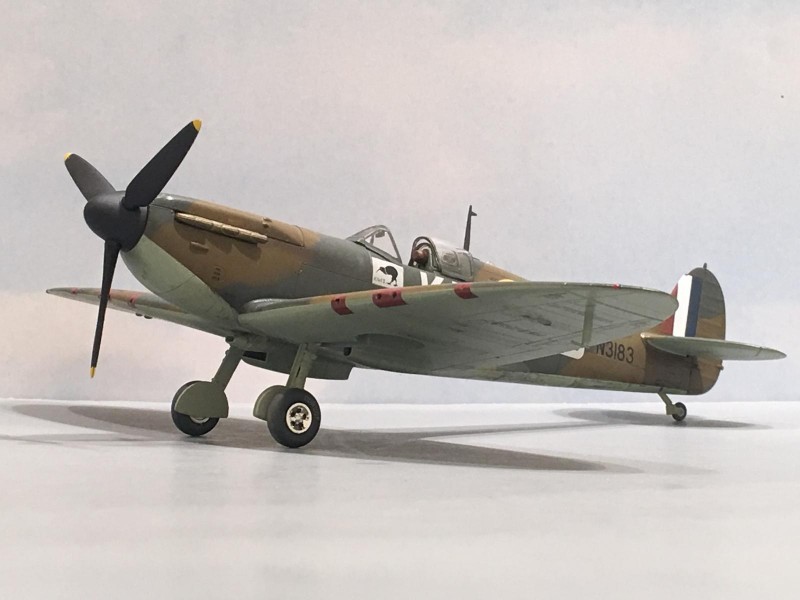
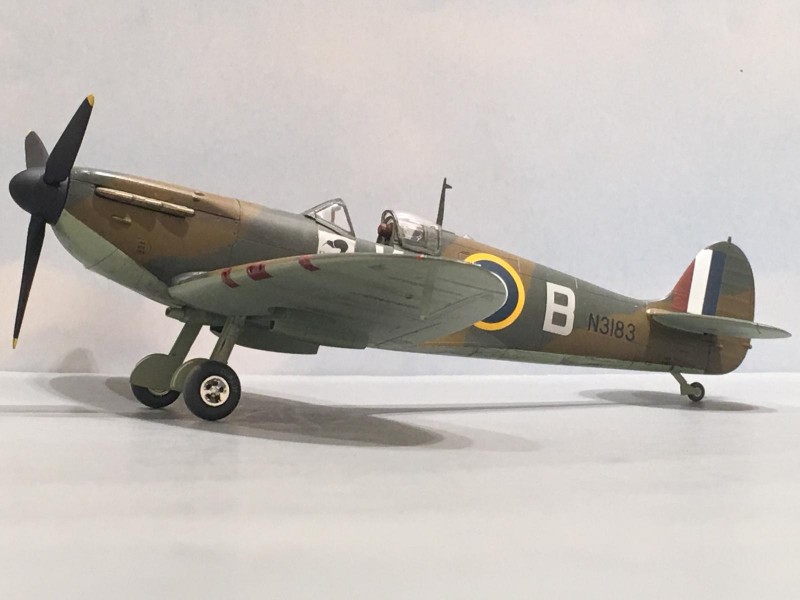
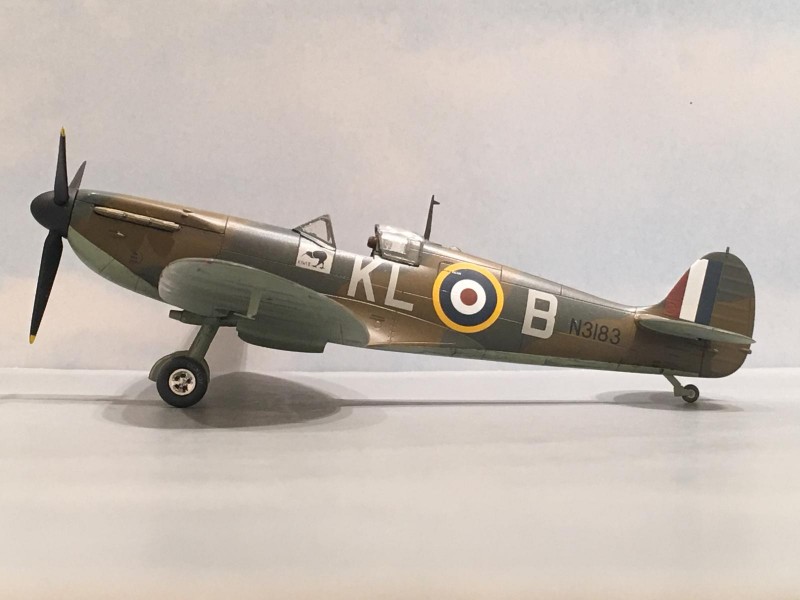
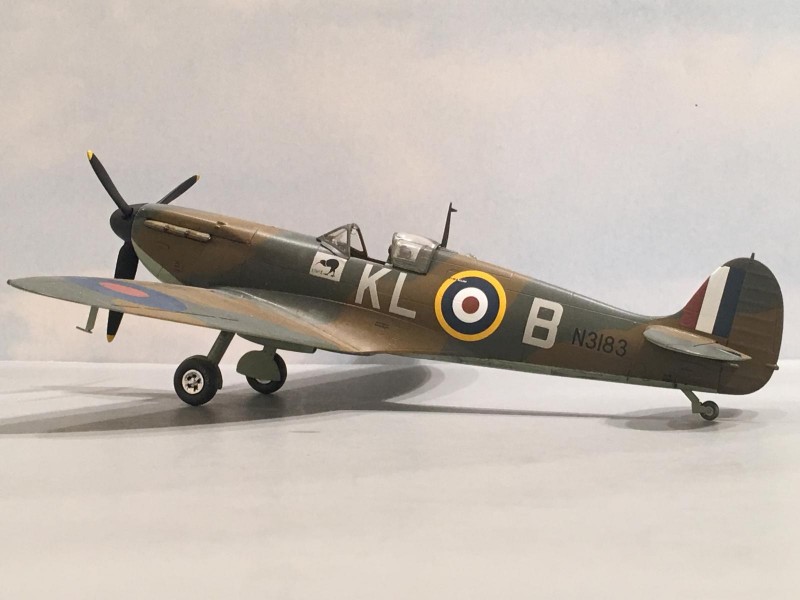
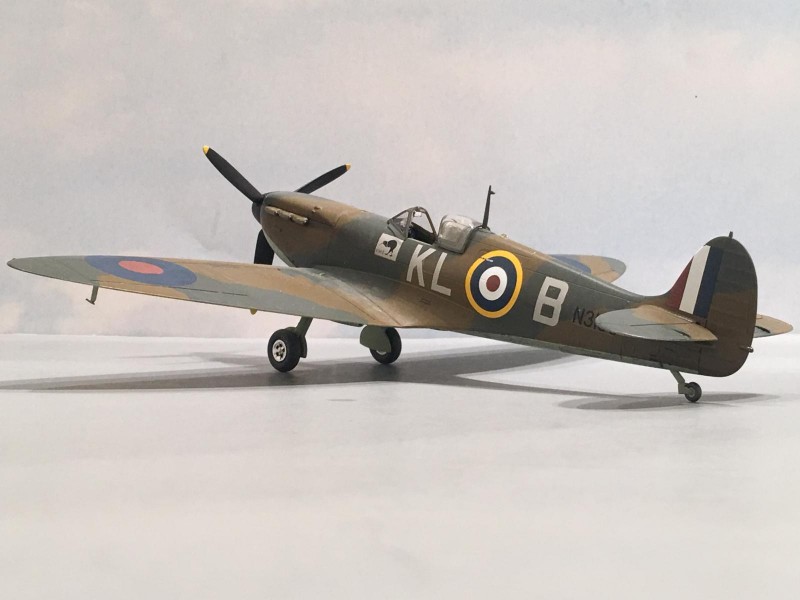
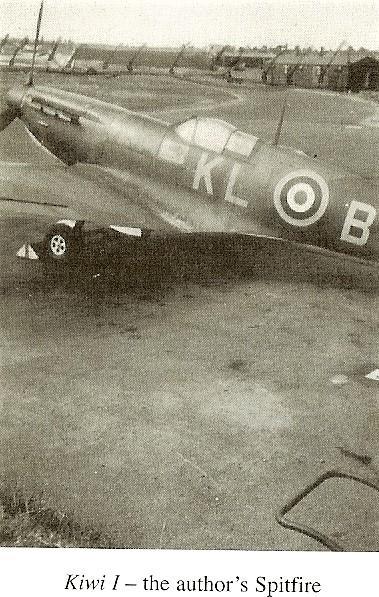
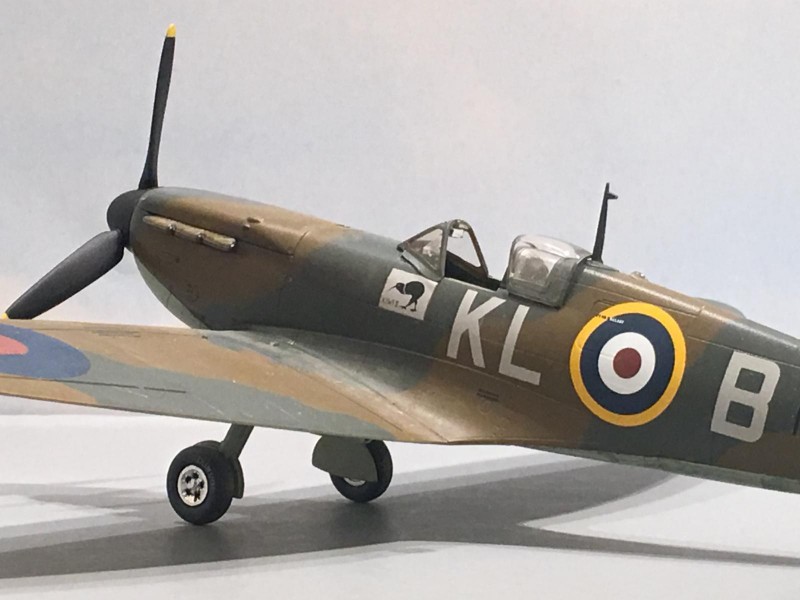
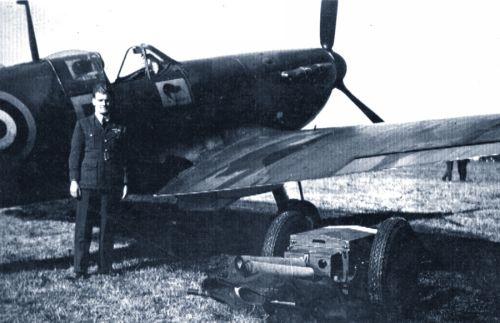
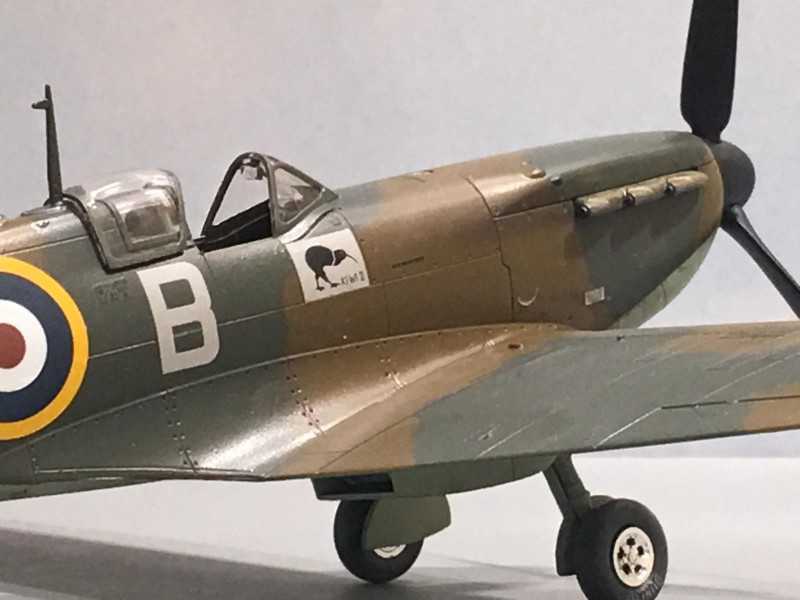
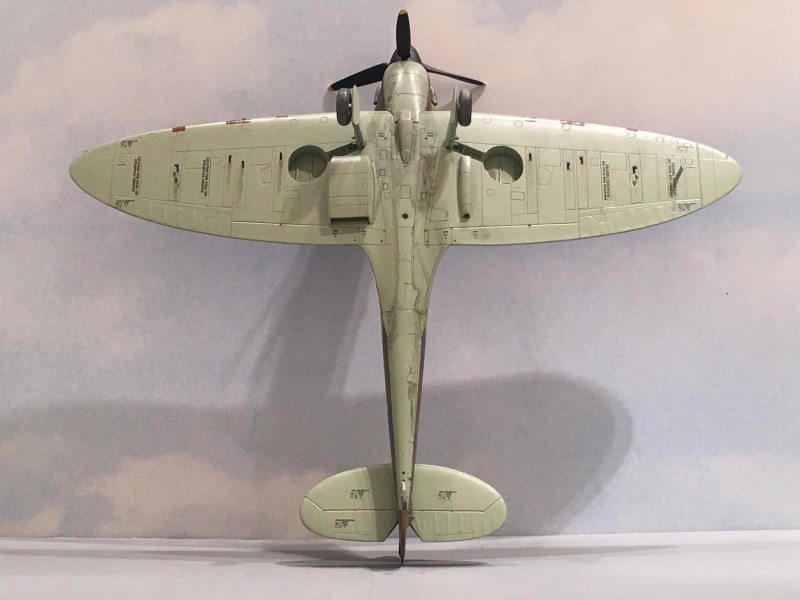
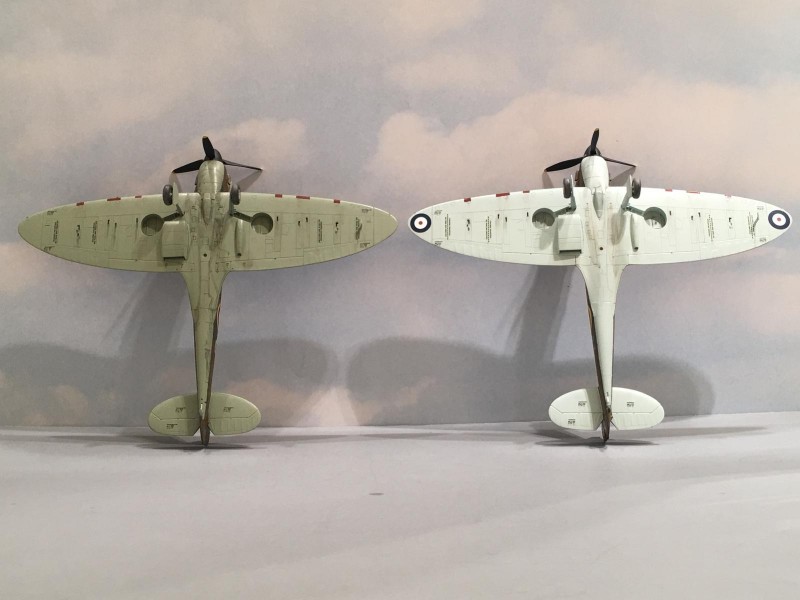
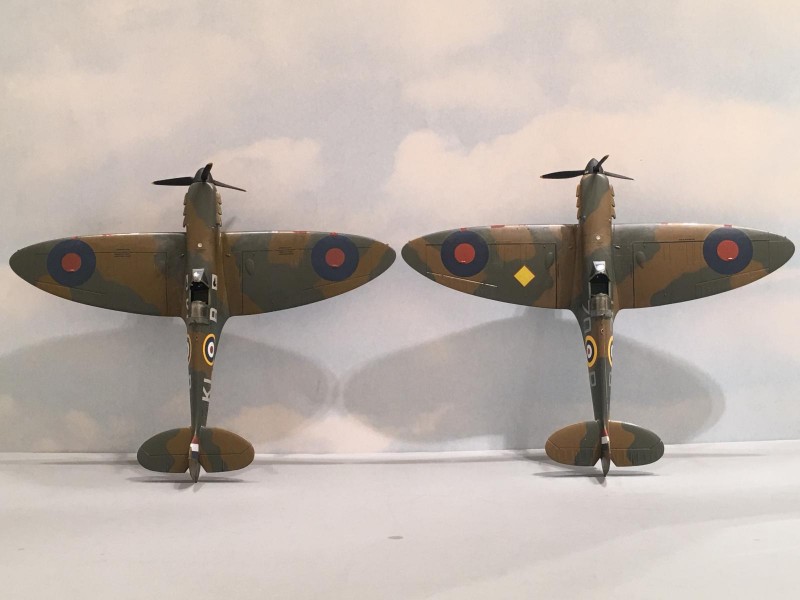
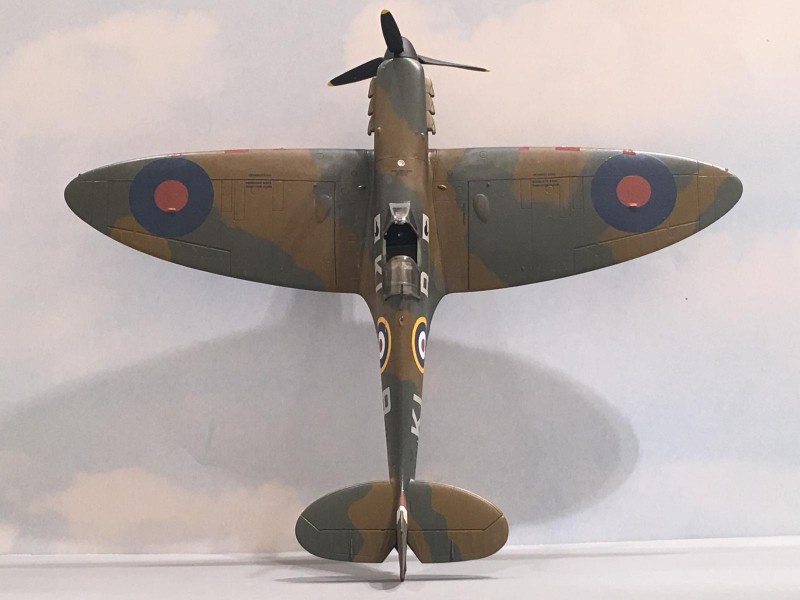
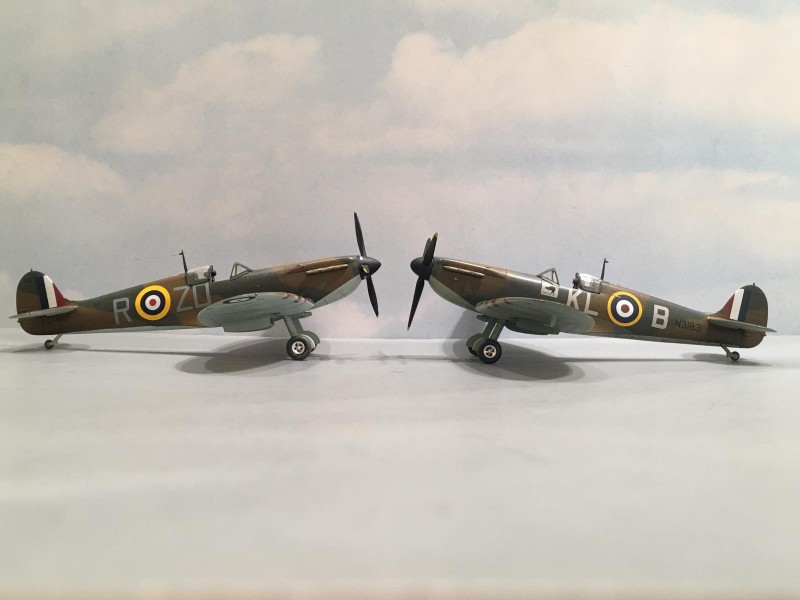
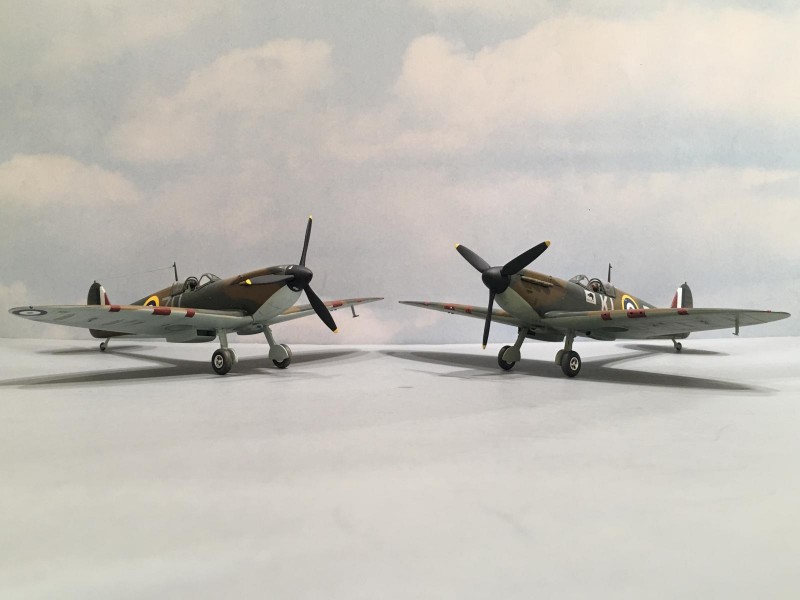
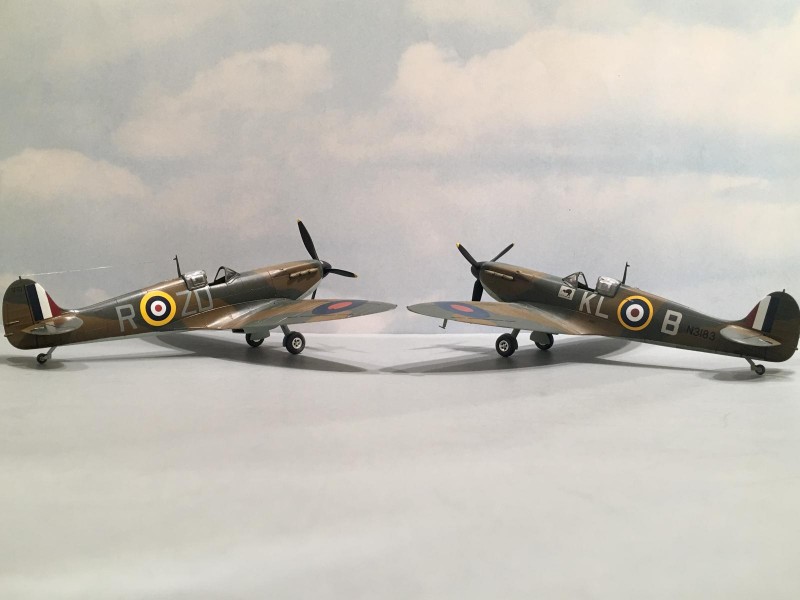

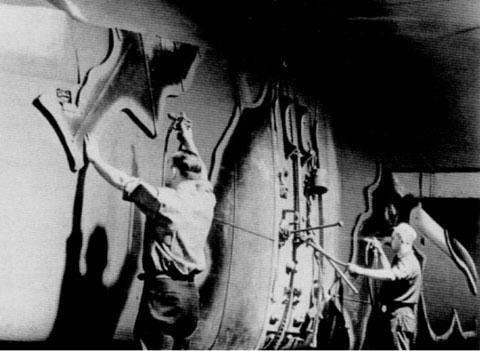
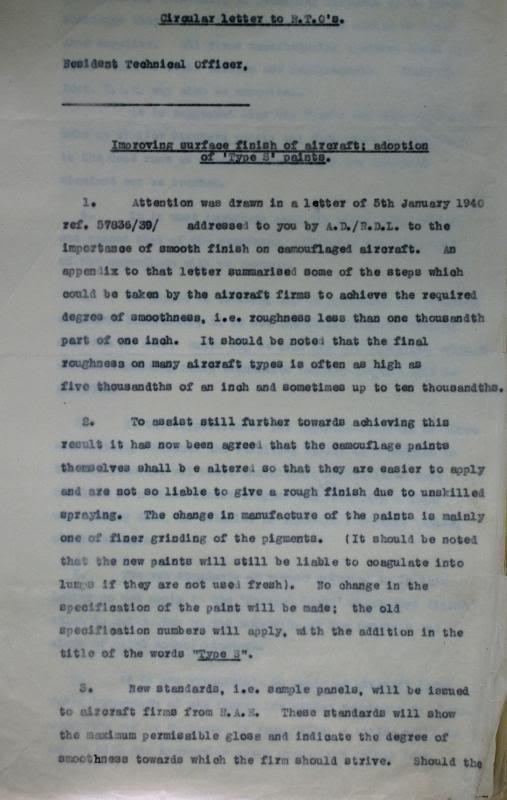
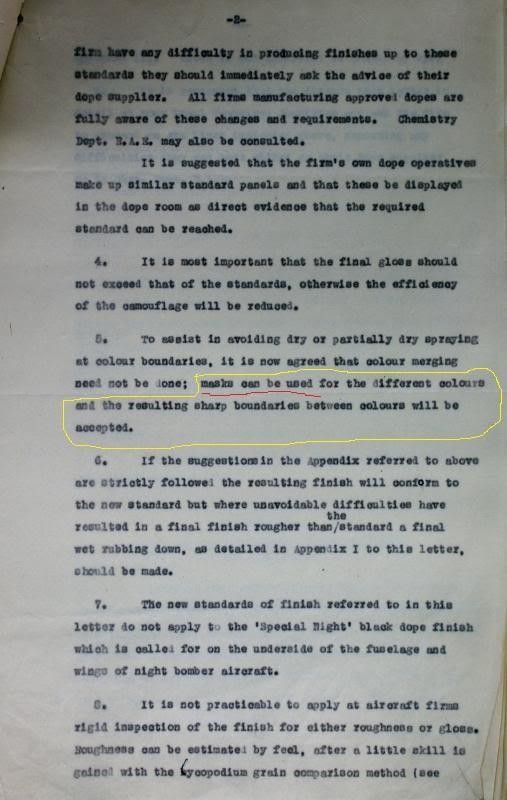
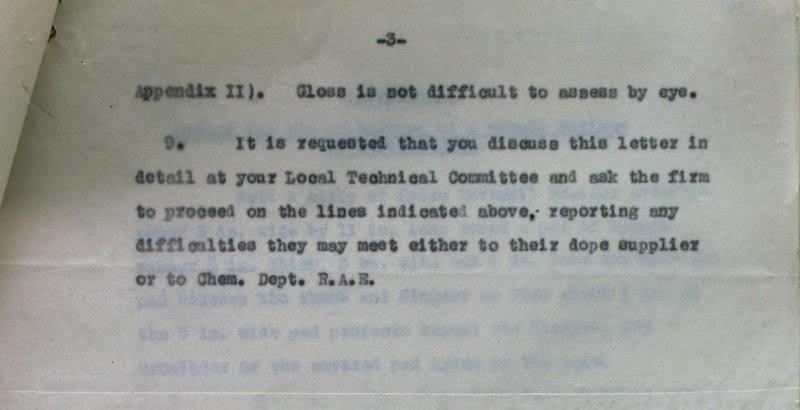
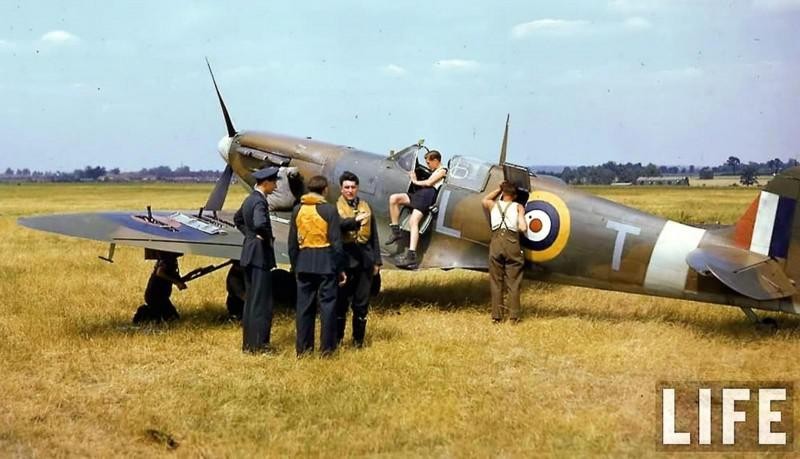
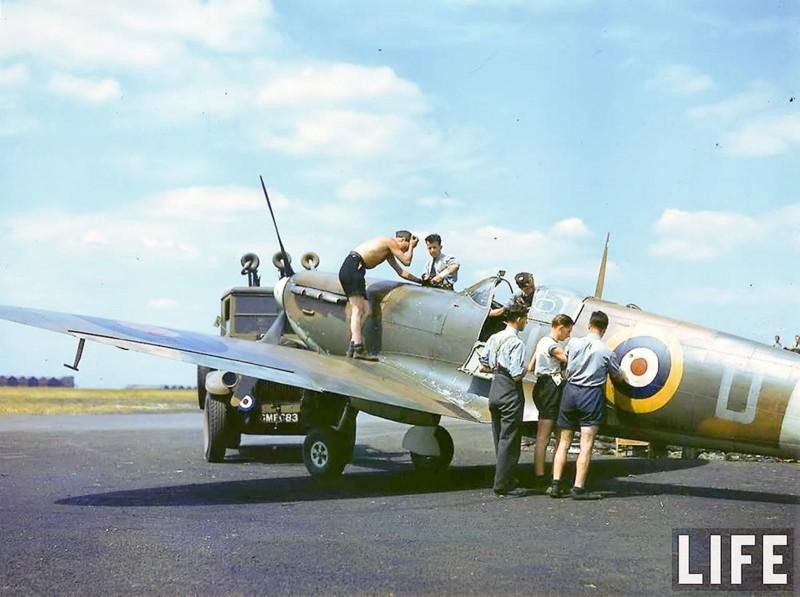
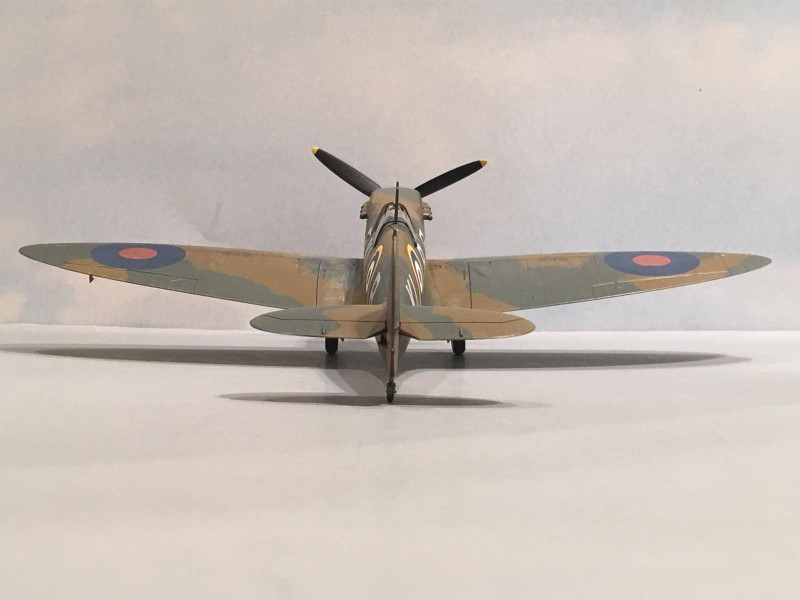
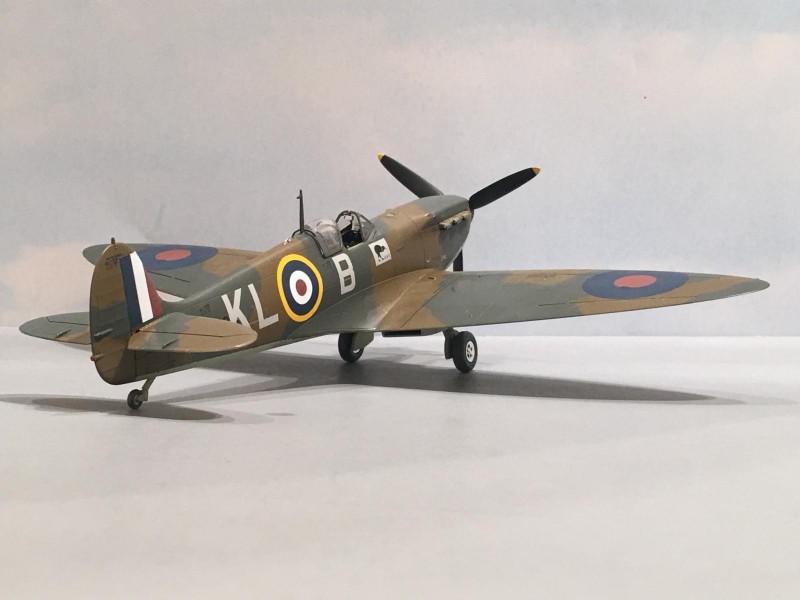
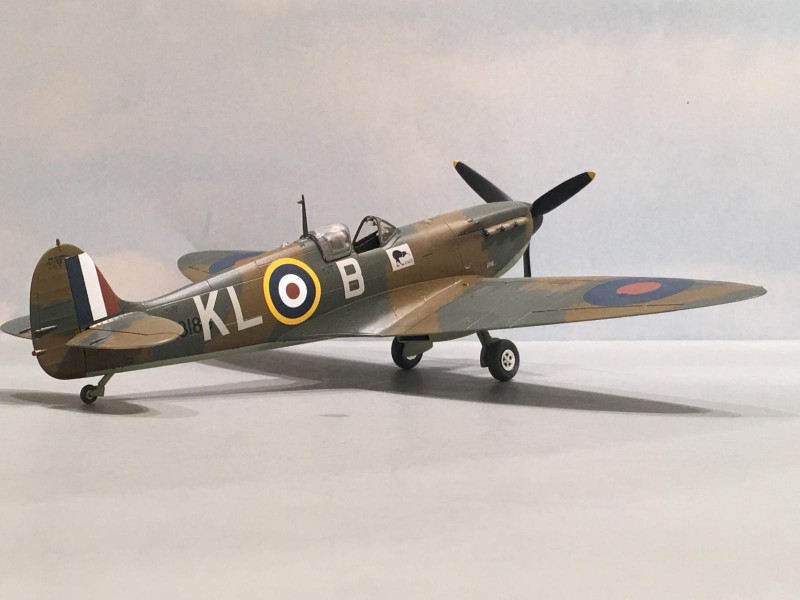
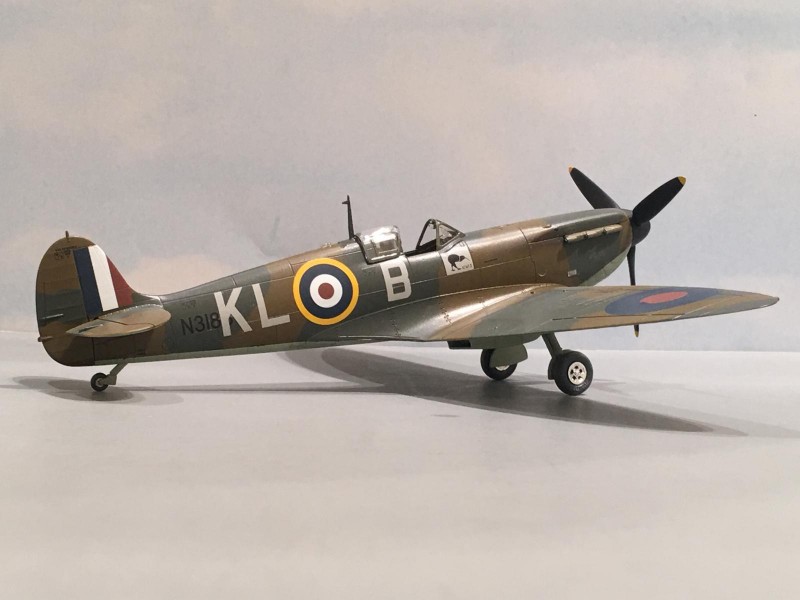
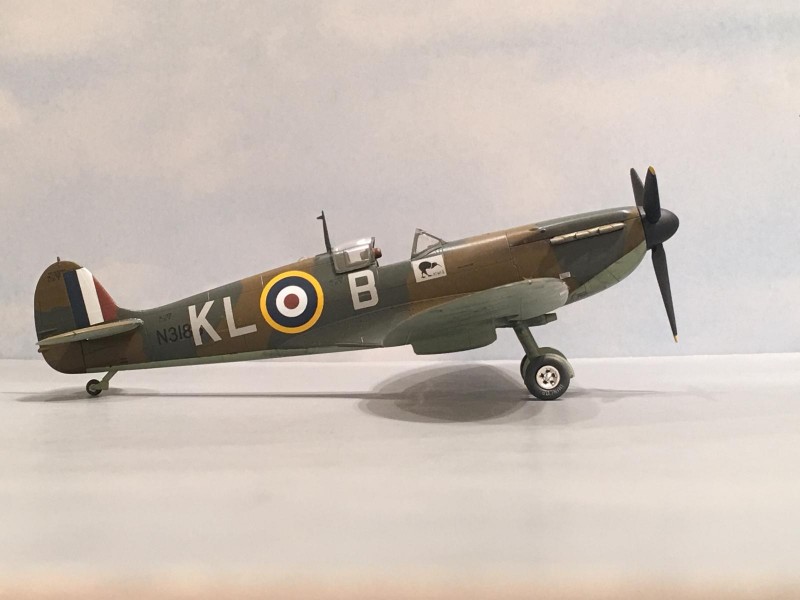
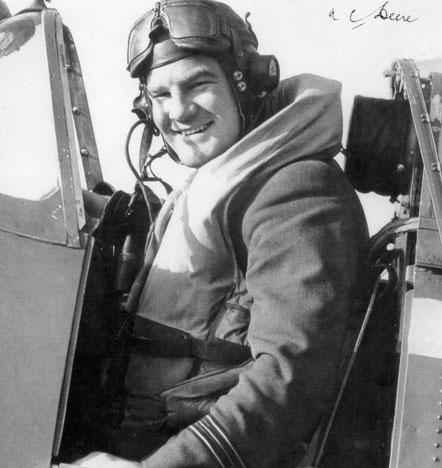
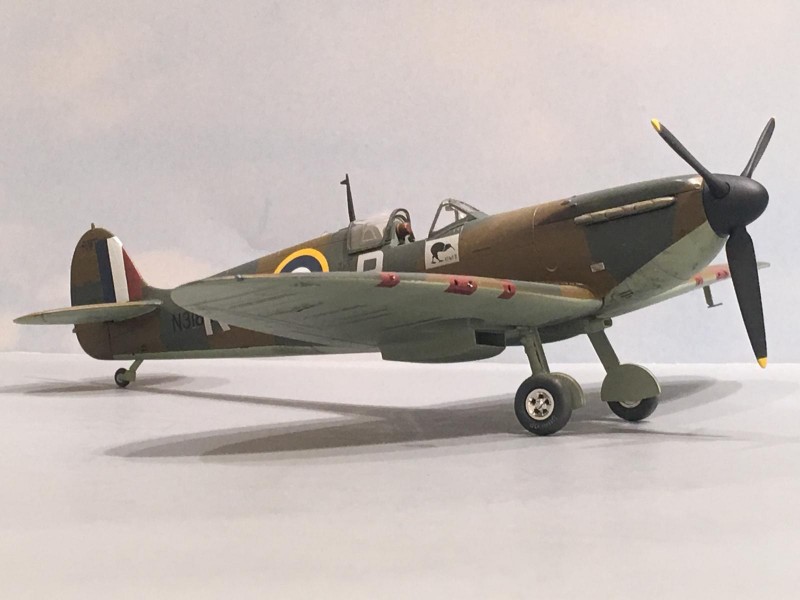

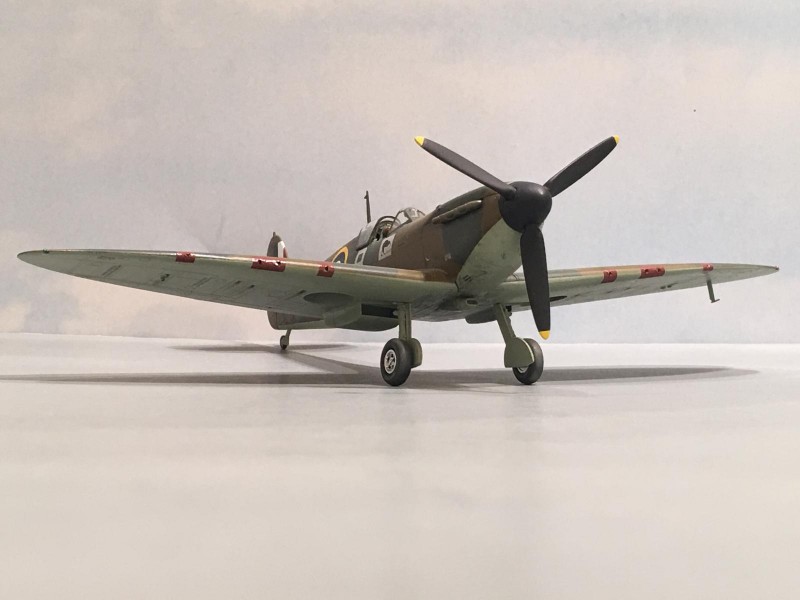
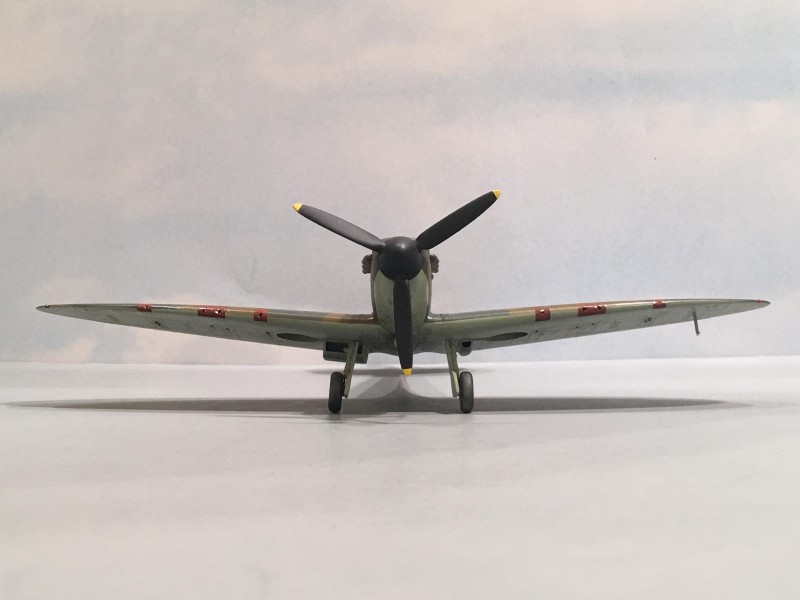
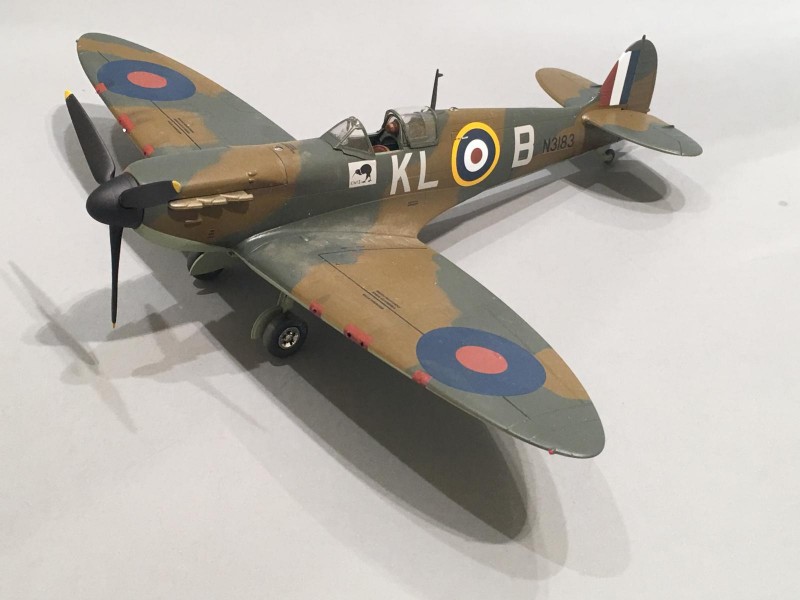

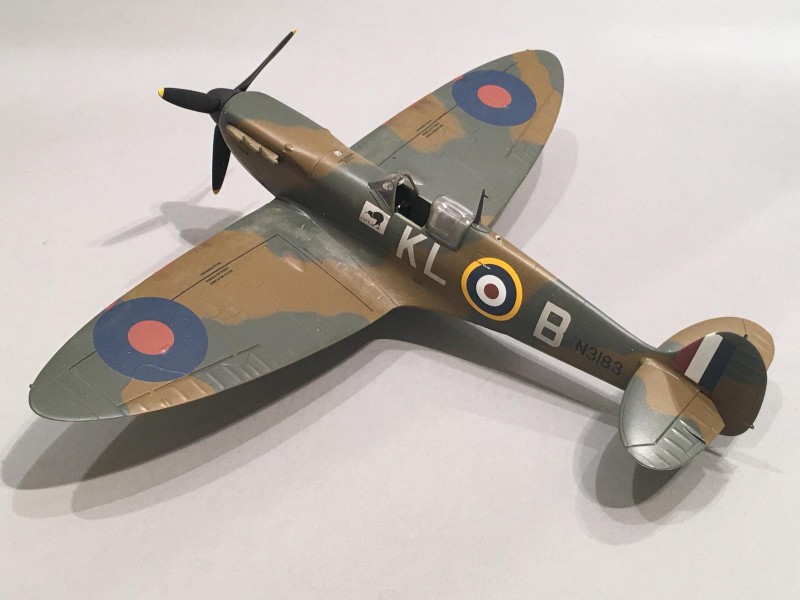
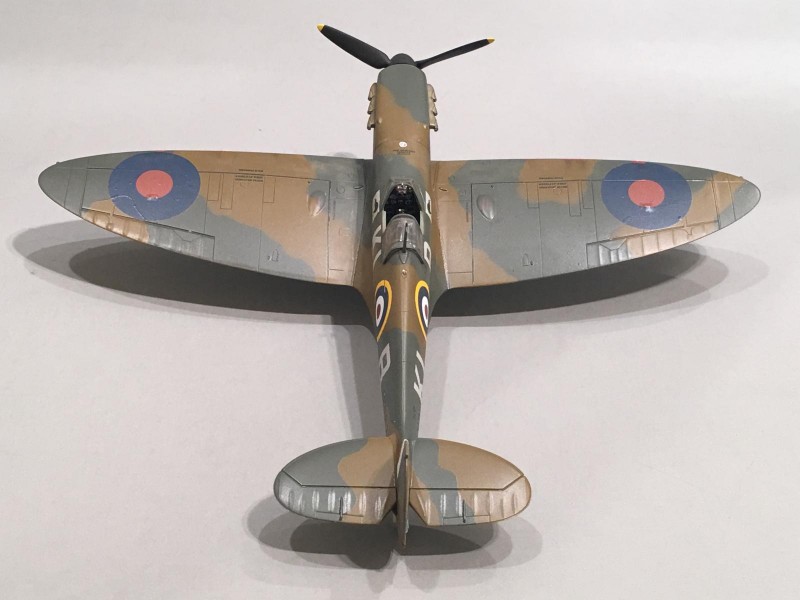
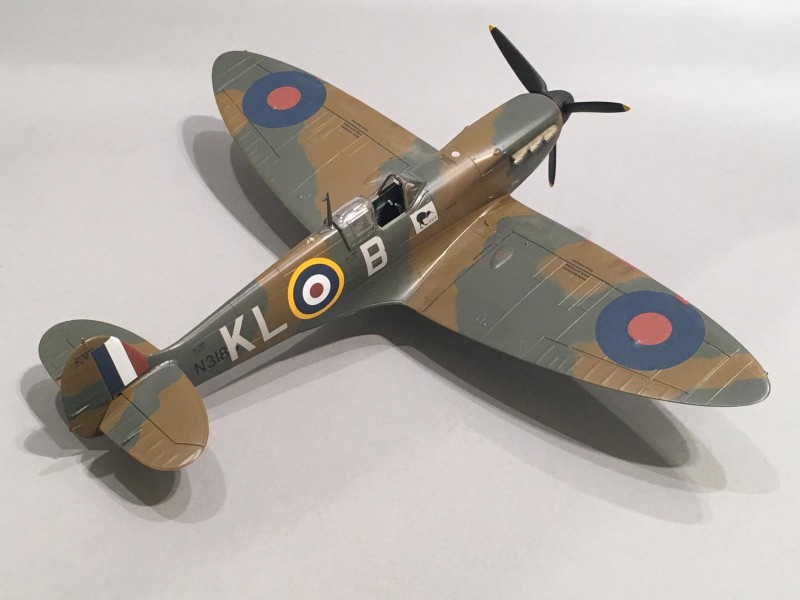

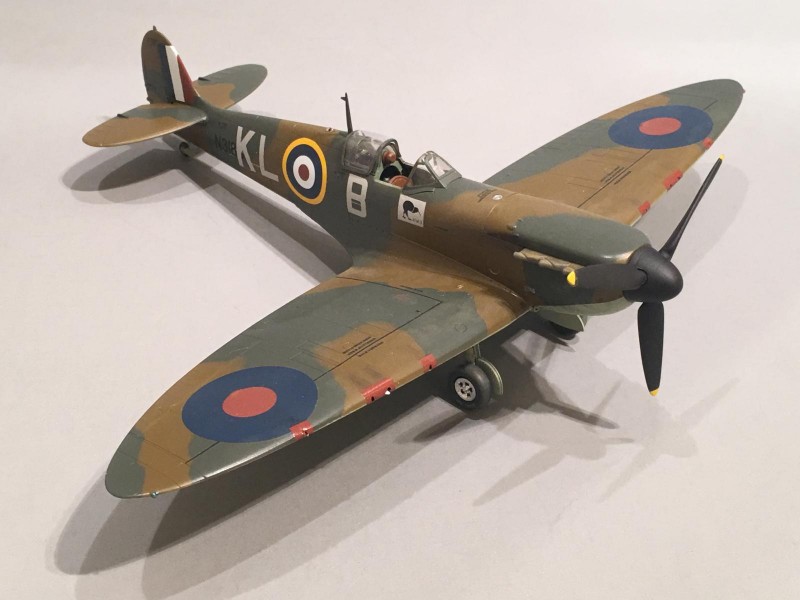
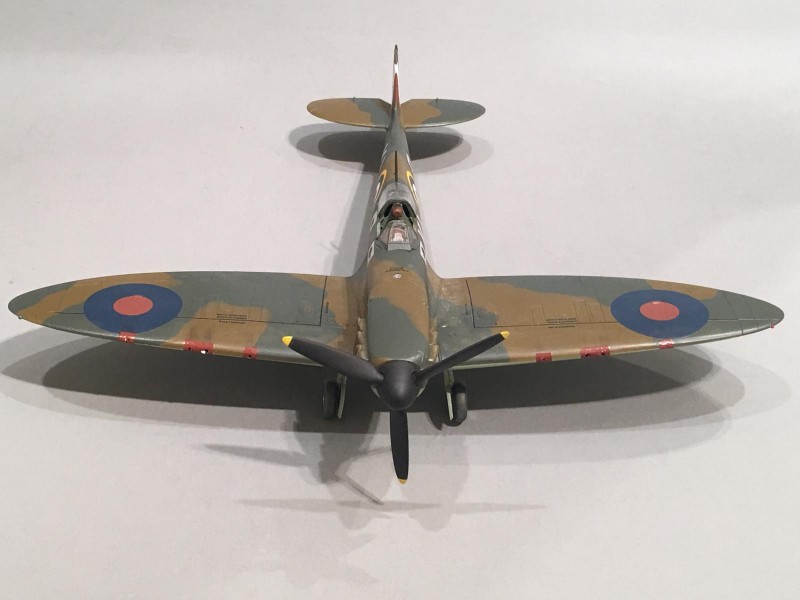
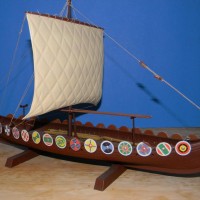

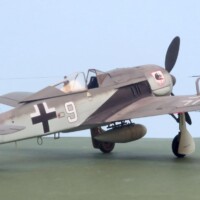
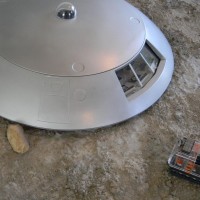
Outstanding presentation as always, Louis...hope all else is well.
Thanks Craig... @craigindaytona
as good as can be expected. I've been trying to stay extra busy to keep from going bat $@+* crazy...The misses starts her chemotherapy treatments on Wednesday. I appreciate you asking. 🙂
Great article and sharp looking Spitfires Lou!
Thanks Dale ! @dtravis
I appreciate the compliment Sir.
Super well done Louis and great info. Hoping for the best
Thank you my friend. @blackadder57
Excellent presentation Louis, on the history of the plane, the man and the quality of the kit with out bashing or unnecessary criticism. And honestly Tamiya is not afraid of Eduards. Eduards is good, no doubt about that so is Airfix, Hasegawa and a number of other kit producers. Tamiya has a niche, huge following worldwide, they just do what they do.
Thank you Chuck @uscusn
for the kind response.
I don't like to criticize any kit manufacturer. They all have their own strengths and weaknesses. Airfix has a weak landing gear joint and a nasty seam along the canopy / fuselage fuel tank insert. Once you get past these things you have a beautiful kit... fine indeed.
The older Tamiya Spit may have a little extra weight on the back side, and a slightly incorrect wing profile, but hey she's getting a little age on her so it's acceptable ! She builds up great and is still beautiful.
The new tool Tamiya Spitfire with the landing gear "incorrect" at 3 degrees off ? You're kidding me right ? 1 millimeter ! Nit picking at it's finest.
The Hasegawa with a basic cockpit ? I've seen worse... much worse.
But all of these kits look like a Spitfire when built... at least to me.
For me, I prefer the Tamiya offering over the others. That's my choice.
But I'm not going to force my will upon others, who may like the Airfix, Hasegawa or the Eduard offerings more. That is their choice. Free will and proper knowledge should help others to make their own informed decision, when it comes to making a purchase.
I seriously doubt that Tamiya is afraid of Eduard. Tamiya makes most of it's money in the RC industry anyway, and I don't think Eduard is going to venture that RC venue any time soon. That is a silly statement. One could just as easily say the Ford Motor Company is afraid of Toyota. Not afraid by any means. Respectful yes, afraid... no.
What many fail to realize is that the power of words comes to play here. We ask for a better model. A company makes it. We then find faults with it, and it is now branded as an outcast, even though it is still acceptable for many.
We live in the Golden Age of modelling. By making negative comments that are not based on facts, this can become very destructive on a companies' business by affecting their revenue.
I will eventually make a purchase of an Eduard Spitfire or one of their Bf-109's. Their new tool Fw-109's look appealing as well to me. The newer Eduard kits appear to be a very nicely detailed kit, but they may not assemble as easily as a Tamiya or Hasegawa.
Until I actually experience this by doing, I will not pass judgment on Eduard.
Bravo Louis, yes so true. I am just so blessed to see kits of obscure aircraft from companies that are not mainstream like those built by Dale Travis, beautiful but rare and difficult, yet look at his results, excellent well done models. That is the passion and love of this hobby. There are collectors and builders. I'm a builder, and also love the history of the plane I'm building. I may not have the skills like Dale or Paul Boyer, or Tolga or even yourself Louis. I appreciate the craftsmanship and attention to detail.. Yet these guys are the first to help, and not criticize another builder on this site. But in a teaching way to advise. Not nitpick. I also love the fact when you explain the history of the aircraft you do so with documentation, images and other facts and not just take your word for it. Any Tom, Dick and Harry (thats a cliche not directed at anyone in particular) can write anything they want, but don't mean its the gospel truth. Don't take their word for it. Look it up, or find excellent books from Dana Bell whose information is base on facts not conjecture, guessing and personal opinions. Well done Louis.
Dale Travis @dtravis
builds up some excellent looking models... as do Paul Boyer and Tolga. These guys have skills that are far beyond the scope of my building. To be considered in their league is the highest compliment. Thank you !
I try to coach others with their builds when possible, if it's in an area that I know something about. If I find a better way of doing something that actually works, I'll not hesitate to pass it along.
I believe the details are what make a model stand out from the rest. In order to get the details "right" I try my best to do some research and dig into the back grounds for each one of my builds. I actually enjoy the research as much as the building...
Dana Bell has written some excellent books and all of his articles are based on facts. I try to follow his lead by writing "Just the facts". I always try to include photos to back up what I state... when I'm lucky enough to find them.
Great work, Louis. I’m still happy with my “ancient” 1993 Tamiya Spits too!
Thank you John ! @j-healy
These older Tamiya Spits still build up just as nicely as the day they were released. No fit problems and no flash present anywhere... I'll take one (or two) any day... 🙂
One of your best presentations Louis, and by far. The enthusiam of your writing coupled with a fine script to tell the tale of your Spitfire and it’s pilot just grabs our attention. I almost passed the models shots 😉 Great stuff.
About your last remarks on the answer to Dale, from someone who built Tamiya Spitfire (old edition like your Kiwi) and the new 190s from Eduard, rest assured both are smooth and easy builds, so go confident and grab one from Eduard.
I sincerely thank you for the compliments my friend.
It pleases me knowing that you enjoyed the read as well. 🙂 @holzhamer
I'm going to have to get one of those Eduard Bf-109's, but their newest FW-190's have been grabbing my attention too ! The problem for me is that I would have to go online and make a purchase, where I prefer to go to a brick and mortar store... I know I'm a dinosaur. Call me T-Rex... Old school...
With a constant eye out for that big meteor headed for the Yucatan Peninsula...
I'll keep your advice and grab up some of them. I have their F6F Hellcat and a few of the old P-39 / P-400's.
Thanks again my friend, and I still have not forgotten about that wonderful ICM He-111 on the corner of my work bench (or it's cousins the Ju-88 and Do-17). Maybe very soon I can get back to work on them too.
A truly superb posting, Louis. In my opinion possibly your best. And what great timing to highlight a Kiwi hero. That small peaceful country needs a boost right now.
The build is superb, an excellent Spitfire that looks the thoroughbred she is in the real world. Beautifully finished and photographed (see you are enjoying the new functionality, I think Martin had been watching your red-tipped toothpick!).
Really enjoyed reading your article and looking at the photos. A real masterclass in presentation and modeling.
‘Liked’ - a great deal.
Hello David ! @dirtylittlefokker
I realized just after posting this article how it coincided with events that were happening halfway around the World. Hopefully Peace will find it's way back home for all of us soon.
I am very pleased to hear that you enjoyed this article as much as you have, and I sincerely thank you for the compliments.
I think that Martin may have been watching my red-tipped toothpick for inspiration too ! Now I'll have to ceremoniously retire it, but it might make a special guest appearance on occasion... I wanted to incorporate the new feature into this article. I think we have a winner with this wonderful new addition. It's a fabulous tool.
I thoroughly enjoy reading your "On this Day" postings too. There's also that certain wooden boat... called "Orca" I have been watching too. 🙂
Well done my friend. On all fronts.
Louis, this is another absolute beauty. I will of course add it to the final presentation - due on the 1st of April to commemorate the end of the 100th Year. I am particularly impressed by just how real it looks - honestly, it could fly of the page!
Al Deere is a legend and a hero, one of the 'brains trust' of the early days of the war. Your narrative of his 'career' is perfect and balances his major contributions, throughout and after the conflict.
Lastly, on the modelling front, I couldn't compare you to any other modeller, Louis - I'd be able to pick an LG build out of any line-up. Your trademark style is technically excellent and exceptionally easy on the eye!
Will be thinking of you this week!
Paul
Thanks Paul, @yellow10
I sincerely appreciate this reply, and the thoughtfulness you placed into writing it.
I am going to try and finish one more Spitfire before the deadline is up for the 100 Years GB. It's another old Tamiya Mk Vb marked as "FL * A" and is almost done. I'll try my best to get It knocked out and photographed before the end of the month rolls around.
Thanks for moderating the GB and taking the time to reply to our postings on almost a daily basis. You set the bar very high for moderating a GB.
I had a blast participating with this 100 Years GB event, and learned so much along the way.
For that I am thankful... You're a great man Paul, and even better friend.
Excellent job on the Spit Louis, and a fine narrative as well. Really enjoyed the history lesson and your take on the various Spitfire kits. Two thumbs up buddy.
Hello Tom ! @tom-bebout
I'm glad that you enjoyed the article. After seeing several of your excellent Tamiya Spitfires, (especially the one from the Kasserine Pass GB), I was inspired to break out my "old Tamiya" Spitfires... Thanks for the inspiration and compliments my friend.
You did it again with your latest Mustang postings...and inspired me again. Now I have a Revell 1/32 P-51D Mustang in cue at the "Iron Werks". Of course your partners in crime, Jim Harley @jimh
and Marc Barris @marc
didn't help things at all... they have some beautiful 'Stangs too. 🙂
A beautiful Spit and a great post to show it off with. Well done!